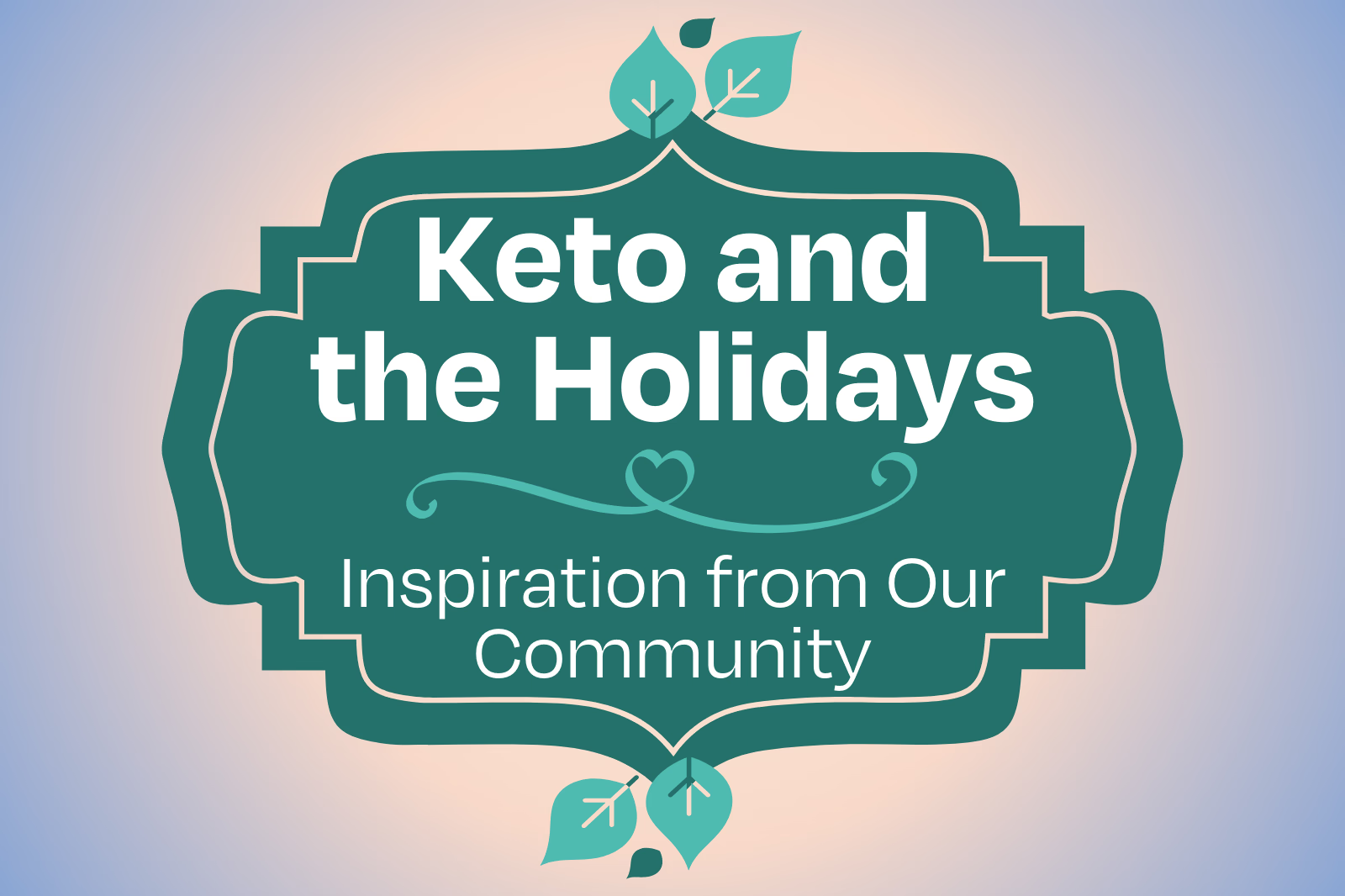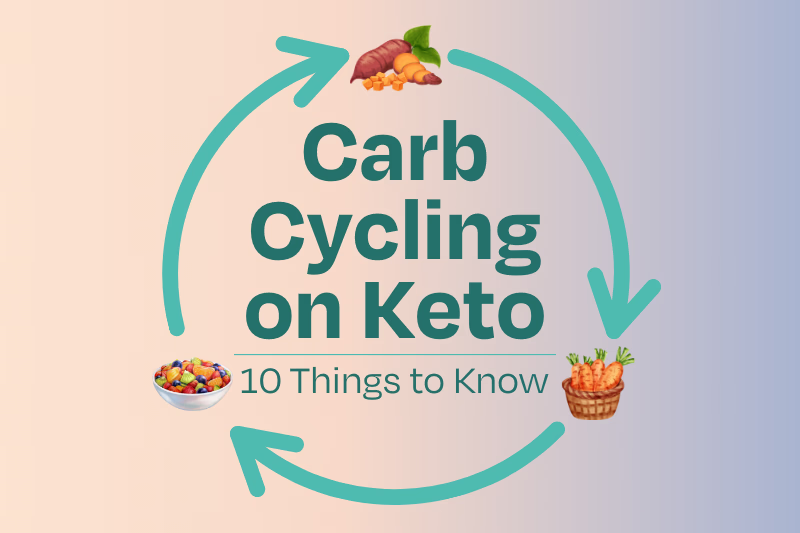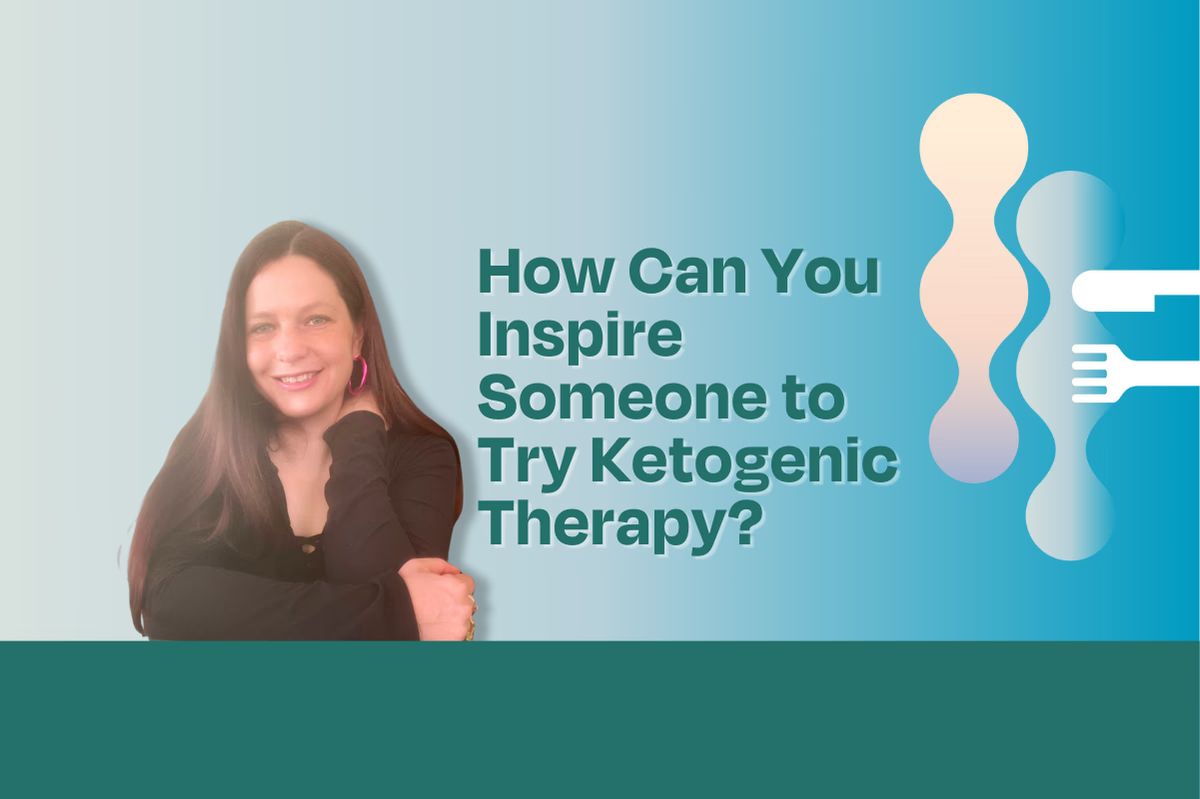I started ketogenic therapy in the summer of 2021 to treat neurometabolic dysfunction, and am now in remission from bipolar 1 disorder.This year marks my third holiday season in ketosis.
Some people on ketogenic therapy find the holiday season challenging. It’s easy to understand why: food and its flavors are deeply entwined with our memories and emotions. For example, I can’t think of Christmas without recalling my mom’s traditional sugar cookies. They are delectable – soft with the subtle crunch of a sweet, rich layer of buttercream frosting, but I now have no desire to eat them. From afar, I appreciate the adorable cookies, shaped like Christmas trees, snowflakes, reindeer and more, all glittering with sprinkles. And when my mom bakes them, I will breathe in the pleasant, familiar aroma and conjure up the taste in my mind, recognizing that the cookies embody the flavor of Christmas to my subconscious. But, like many others in the growing community of people treating their illnesses with ketogenic therapy, I choose health above all else, even the nostalgic power of certain foods.
Of course, there’s no single way that will work for everyone who is trying to get through the holidays without disrupting their ketogenic therapy. Though it’s ill-advised for many conditions, some will plan to have a cheat day. Others will avoid deviating, fearing a slippery slope. Many will face frustration over family and friends who try to pressure them into eating higher-carb foods. And plenty of people embrace their keto diet during the holidays, enjoying the same comfort and connection that food can provide, just minus the carbs.
To help those of you who are aiming to stick with your diet throughout the holiday season, I will share three neuroscience-informed tips I learned at the 8th Global Symposium on Ketogenic Therapies. These holiday food hacks are inspired by a series of talks on the fascinating, interdisciplinary field of neurogastronomy.
What is Neurogastronomy?
Neurogastronomy explores the relationship between the brain and the perception of flavors, tastes, and culinary experiences, taking into account complex factors like memory and emotion. At the symposium, Timothy McClintock, PhD, a professor of physiology at the University of Kentucky, explained that our experience of flavor is generated by multiple senses, assembled from smell, taste, and touch, and also impacted by sight and sound. Our perception of flavor is also deeply linked to our emotions and memories. Once flavor preference is learned it can be difficult, but not impossible, to change.
Because I’m always looking for new ways to improve my diet and health, I am excited to try the following neurogastronomy strategies this holiday season. I hope they will inspire you to enjoy the holiday festivities in a way that promotes your mental and physical health.
1. Enjoy flavor mindfully as a multisensory experience
I plan to manipulate my multisensory perception of taste this holiday season by creating beautiful, flavorful foods. My savory dishes will utilize fresh herbs, such as thyme, basil and rosemary, adding strong aromas, rich flavors, and visually appealing garnishes. While keto-friendly sweeteners are not recommended for all, my personal preference when I want to add a touch of sweetness is a small amount of pure monk fruit liquid. In place of my mom’s traditional Christmas cookies, I will enjoy a variety of indulgent fat bombs, prepared in festive silicone molds. I will include berries and spirulina to add natural, vibrant colors. I also plan to make virgin homemade keto ginger ale cocktails ornamented with fun ice cubes that have flowers and berries frozen into them for extra pizzazz.
To increase the multisensory experience and enhance my enjoyment, I will eat slowly and mindfully, consciously focusing on the beauty, aroma and flavor of my food, while being present in the moment. I’ll take time to admire the atmosphere and decorations, listen to the background music, and engage in meaningful conversations with loved ones. My healthy body and mind make every holiday experience more enjoyable.
2. Use mouthwatering descriptions to affect my food choices and consumption
Language is a powerful tool. The way that food is described can actually change its perceived desirability and taste. During the symposium session on neurogastronomy, Rachel Herz, PhD, a neuroscientist and Adjunct Assistant Professor of Psychiatry and Human Behavior at Brown University, shared two fascinating studies designed by Alia Crum, PhD, Associate Professor of Psychology at Stanford. The studies investigated the way language influences food choices and can even change our physiological responses to what we eat.
One of Crum’s studies was conducted in the campus cafeteria at Stanford University. Researchers prepared labels for identical vegetable dishes with four different description categories. At polar ends of the spectrum were an indulgent description that amplified the delicious ingredients (for example, sweet sizzlin’ green beans & crispy shallots) and a healthy restrictive description (light & low-carb green beans & shallots). The study examined how many vegetables were taken and consumed. The indulgent description won by a landslide: indulgently labeled vegetable dishes were chosen 41% more and consumed 33% more than those with the seemingly healthful and restrictive label. The take-home message is that language can manipulate our perception of flavor, and the desire for deliciousness motivates food decisions and consumption.
This study reinforces my decision to focus on the enriching, tasty aspects of my keto diet rather than what I cannot have, which could fuel feelings of deprivation. Perhaps, most importantly, it influenced my thoughts about how I’ll share the food I prepare this holiday season. I plan to write up appealing, mouth-watering menu descriptions to display with my dishes. For example, instead of calling my mushroom pie “low-carb,” “gluten-free,” or “dairy-free,” I can label it as Savory Mushroom Pie: portobellos and shiitakes in rich coconut cream spiced with thyme and rosemary in a flaky organic almond flour crust. While I am not certain my extended family will be lining up to indulge in my keto-friendly dish, it will be interesting to see if it helps, and just writing the description makes me hungry!
3. Savor the healing power of food
Herz shared a second study led by Crum that has become famously known as the Milkshake Study. Crum labeled an identical French vanilla milkshake in two different ways: Sensishake, consisting of only 140 calories, zero percent fat, and no added sugar, and Indulgent, totaling 620 calories and extremely decadent. Both shakes had the same ingredients and consisted of 300 calories. Before and after participants consumed their milkshakes, nurses measured their ghrelin levels.
Ghrelin, a hormone secreted in the gut, signals hunger and slows metabolism. Scientists long thought that ghrelin levels fluctuated in response to nutrients in the stomach. This would imply that ghrelin responds differently after a small snack versus a big meal. But in her milkshake study, Crum found that in those who believed they were drinking the Indulgent shake, their bodies responded as if they had consumed much more than they actually had. They saw a ghrelin drop of around three times that of those who consumed the Sensishake. This means that the individual’s perception of the shake’s content dramatically impacted their physiological response.
Crum’s study highlights the mind-body connection, which is especially relevant to anyone treating neurometabolic dysfunction. I find it helpful to tell myself that my diet deliciously boosts and repairs my mitochondria, lowers inflammation and oxidative stress in my body, strengthens the pliability of my brain by increasing neuroplasticity, and allows me to have a better overall life experience, including during the holidays. I leverage placebo power and utilize positive-framing to aid my metabolic therapies. While I have no scientific proof that this positive self-talk directly impacts my body and has assisted in healing my neurometabolic dysfunction, at the very least, I know it positively reinforces my lifestyle choices.
Not only will these tips help me enjoy the holidays, they may also help my loved ones make healthier choices.
Emphasizing to myself and others that I can happily be a keto foodie highlights that this is not a lifestyle of deprivation, but one that allows indulgence while improving physical and mental health. I enjoy food now more than ever, because my diet is healing, satiating, less likely to induce cravings, and, of course, absolutely delicious. This is something worth celebrating!
Sources
- Timothy McClintok, PhD. Neurogastronomy: How the Brain Creates Flavor and Why It Matters. 8th Global Symposium on Ketogenic Therapies. 2023.
- Rachel Herz, PhD. Neurogastronomy: How the Brain Creates Flavor and Why It Matters. 8th Global Symposium on Ketogenic Therapies. 2023.
- Crum, Alia, et al. “Association Between Indulgent Descriptions and Vegetable Consumption: Twisted Carrots and Dynamite Beets.” JAMA Intern Med. (2017)
- Crum, Alia, et al. “Mind Over Milkshake: The Effect of Mindset on Enjoyment and Ghrelin Levels.” Health Psychol. (2013)






